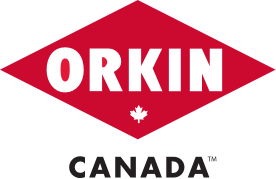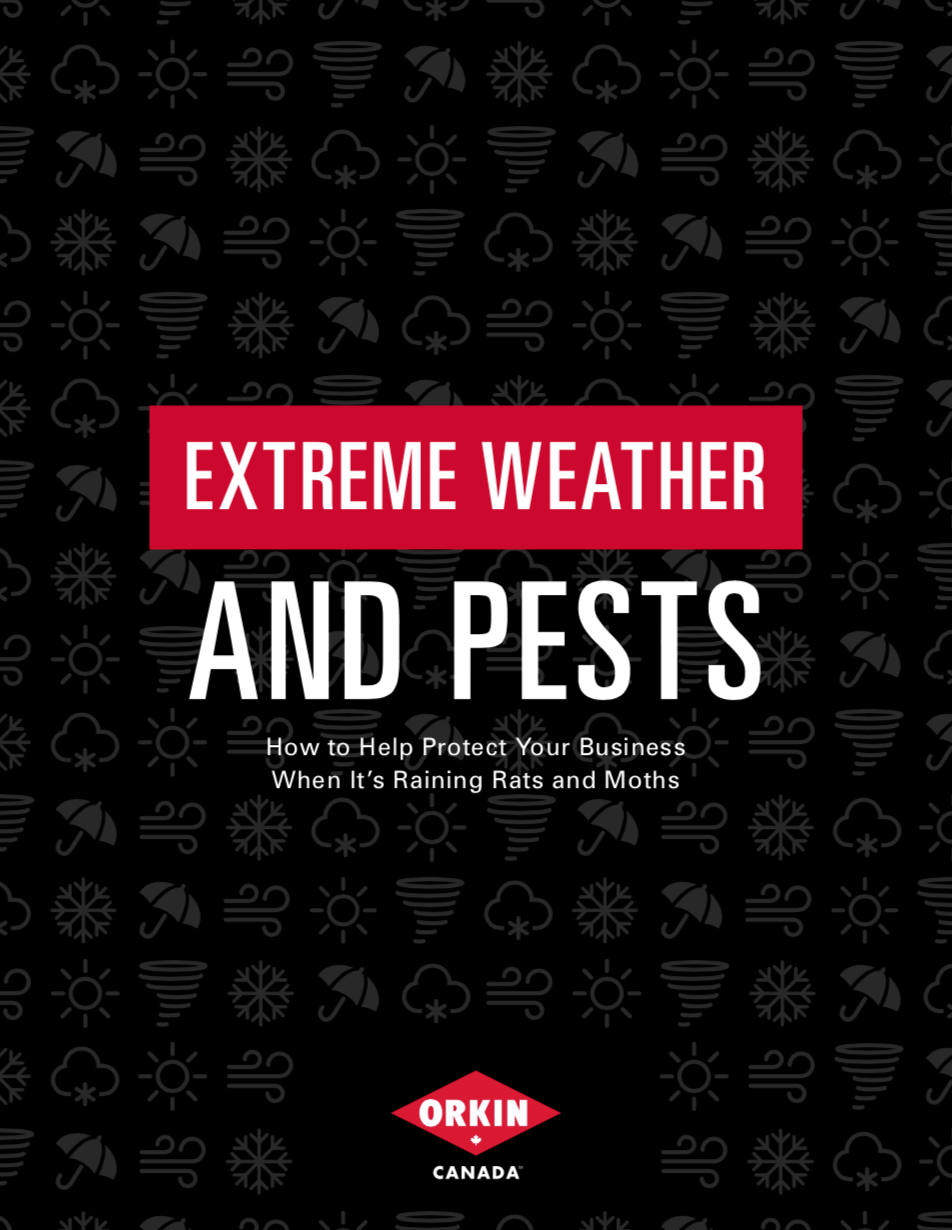Extreme weather is just that—extreme. In a moment, it can change everything, leaving a trail of destruction that can take years and billions of dollars to clean up. In addition to loss of property and disruption of day-to-day operations, extreme weather can intensify an existing pest problem or surface a new one. Because when hurricane winds finally abate and flood waters subside, your focus would ideally be on bringing revenue in—not on keeping pests out.
And for businesses that are just trying to stay afloat, the additional income lost or unplanned costs of a pest problem can add to an already taxing recovery effort. So, before extreme conditions leave you high and dry (or low and wet, as the case may be), check what’s on the pest forecast. In this guide, you’ll learn which pests pop up most frequently after extreme weather events. You’ll also come away better prepared to help protect your business from Mother Nature before and after disaster strikes.
Tornadoes
The size, speed and resulting damage of twisters vary greatly, but even a small tornado leaves a sizeable path of destruction. It’s in the midst of this aftermath that pests fly into action.
What is a tornado?
A violently rotating column of air descending from a thunderstorm and in contact with the ground.
Peak Season: April – June
Pest Forecast
Downed trees and scattered debris provide shelter for rodents and wildlife and serve as readily available sources of food for termites, flies and other pests.
Pest Management after a Tornado
Once a tornado has blown through, it’s time to assess and clean up the damage. Here are a few practical ways you can help protect your property from any pests that may enter the premises.
Awnings, eaves, downspouts and gutters are often the first to blow off of buildings during high-speed winds. Replace or repair them as soon as possible to help close off possible pest entry points.
If the power goes out, perishable foods are in jeopardy—and rotting food is a pest’s favorite meal. Ensure generators are working, and if they’re not, get them back online as soon as possible.
If waste management services are unable to reach your building, trash can quickly build up, attracting flies and rodents. Make sure you have a plan in place for waste disposal that moves it away from structures and helps minimize pest activity from crossing over from trash piles to your building.
Hurricanes
These monster storms may vary in strength and size, but once they make landfall, they’ll drench, damage or destroy anything that stands in their path. When the storm has passed and clean-up begins, you’d better be on the lookout for the storm’s next wave—a cloud of pests.
What is a Hurricane?
Hurricanes, known broadly as tropical cyclones, are rotating, organized systems of clouds and thunderstorms that form over tropical or subtropical waters and have closed, low-level circulation.
Peak Season (Atlantic): June – November
Pest Forecast
During the storm, the water and wind drive most pests to seek shelter indoors. But it’s in the aftermath that flies, mosquitoes and other pests really flourish.
Pest Management after Hurricanes
High-speed winds, torrential rain, storm surges—these elements make hurricanes the perfect storm for pests. Here are a few tips to help protect your business from pests that pop up after a super storm sweeps through.
Flat roofs and ventilation screens are particularly susceptible to storm damage and can give pests an easy access point. Inspect and repair as soon as possible.
Check production line equipment for water damage and mildew build-up, which can attract pests like large flies.
Structural damage can compromise even the most airtight of facilities, letting in pests like mosquitoes and rodents, and the diseases they transmit. Examine walls, roofs, screens and window seals.
Bay doors and door sweeps are prone to damage, so repair them as soon as possible to help keep larger pests like snakes and rodents out.
Standing water can serve as a breeding ground for mosquitoes. Check flat roofs, courtyards and other large, exposed areas that could collect rainfall.
Temperature Extremes
Humans aren’t the only ones hiding inside when the temperature hits extremes. Unlike us, pests aren’t as picky about where they spend their time. Their main objective is to get out of the elements, and they find even the least comfortable places in your business pretty cozy.
Heat Wave
A period of unusually hot weather that typically lasts two or more days. To be considered a heat wave, the temperatures must be outside the historical averages for a given area.
Pest Forecast
High-temperatures bring most pest activity to a standstill, but some resilient species still have enough energy to move indoors.
Cold Wave
An unusually large and rapid drop in temperature over a short period of time, such as 24 hours.6, 7 The definition of what’s “extreme” will vary greatly by location.
Pest Forecast
Most pests won’t survive the first cold snap, but larger, warm-blooded species can usually hang on long enough to find a way inside your facility.
Pest Management after Temperature Extremes
When the mercury rises higher than 110° F or drops below 50° F, pest activity outdoors slows to a crawl, driving many species to seek shelter indoors. Here are a few practical tips to help make sure no rodent, wildlife or bug is getting snug in your rug—or building’s crawlspace.
During extreme heat, pests will look for any unsealed entrances, like HVAC intakes, gaps under doors and exterior cracks. Make sure to close them off, helping reduce pest access.
When the temperature drops and the nights grow long, 24/7 lights become particularly attractive to heat-seeking pests. If possible, turn off any unnecessary fixtures.
Large, metal buildings can become incredibly hot during summer months, leading employees to crack a door or a window. If necessary, install screens or air curtains to help prevent pests from taking advantage of those temporary openings.
Water Extremes
Hoping the rain will finally wash away your pest problems? Keep hoping. Extreme saturation usually results in a pest flare-up. And while “drought” usually brings cracked creek beds and rambling tumbleweeds to mind, the reality can mean more pests come knocking at your door.
Drought
A deficiency in precipitation over an extended period—it is a normal, recurrent feature of climate that occurs in virtually all climate zones.
Pest Forecast
When there’s not enough water to go around, hardy species like ants, rodents, bees and wasps will track down and camp out near any available bodies of water.
Flood
An overflow of water onto normally dry land—the inundation of a normally dry area caused by rising water in an existing waterway, such as a river, stream or drainage ditch.
Pest Forecast
During a flood, pests will seek out high ground—like the second story of your building. When the waters subside, termites will be on the hunt for waterlogged wood, and mosquitoes will be in search of a place to lay their eggs.
Pest Management after Water Extremes
Whether you’re begging the rain to come or go away, wishful thinking alone won’t protect you from pests. But these post-drought and post-flood tips just might help.
Flood waters can wash away the top layer of soil, and your termite treatment along with it. Reach out to your pest control provider about a follow-up inspection as soon as possible.
A flood will most immediately affect the ground floor of your building. Inspect for any build-up of mildew and mold that could attract flies and other pests that feed on decaying organic matter.
Any flood waters that reach cold storage might also be carrying waterlogged pests. Once flood waters have dried out, carefully check the area for any unwanted squatters that may be feeding on decaying organic material.
During a drought, wasps and bees will seek out micro-sources of water, like leaky A/C condensation lines and fountains. If possible, temporarily seal those off.
The best way to deal with the extreme conditions Mother Nature throws our way is preparedness—and that includes helping defend against post-event pests. That’s why it’s so important to have a plan in place to help protect your business from pest populations and their impact after extreme weather.
Are you interested in learning how to help safeguard your business with an effective Integrated Pest Management (IPM) plan? Our Precision Protection™ service delivers scientifically based solutions to meet your facility’s needs. We’ll even assess your current pest control program for free—on your schedule, an Orkin representative can conduct a professional site inspection of your business and evaluate your IPM plan with no obligation whatsoever.
Need a quick reference guide for all of this? You can also download our expert tips sheet here.
You may also like
Canada's Top 25 Bed Bug Cities Of 2023
Bed bugs are extremely efficient hitch hikers. They can move easily across a room and climb onto luggage or anything left on a bed in just one night. Learn which cities have made Canada’s top 25 bed buggiest cities.
British Columbia's Top 20 'Rattiest' Cities 2023
As winter approaches, pest control leader Orkin Canada reminds homeowners and business owners to take precautions to help keep rodents out. Cities are ranked by the number of rodent (rat & mice) treatments the company performed from August 1, 2021 through July 31, 2022.
Ontario's Top 25 "Rattiest" Cities 2023
Pest control leader Orkin Canada reminds home owners and business owners to take precautions to help keep rodents out. Cities are ranked by the number of rodent (rat & mice) treatments the company performed from August 1, 2022 through July 31, 2023. This ranking includes both residential and commercial treatments.
Eastern Canada's Top 15 'Rattiest' Cities 2023
As winter approaches, pest control leader Orkin Canada reminds homeowners and business owners to take precautions to help keep rodents out. Cities are ranked by the number of rodent (rat & mice) treatments the company performed from August 1, 2021 through July 31, 2022.
Remove pests from your business, and stop them from coming back
We work hard to listen, understand and assess your unique situation. Request a free, no-obligation consultation today for a customized pest program that fits your needs.
Request a Free Business ConsultationRequest a Free Home Estimate


